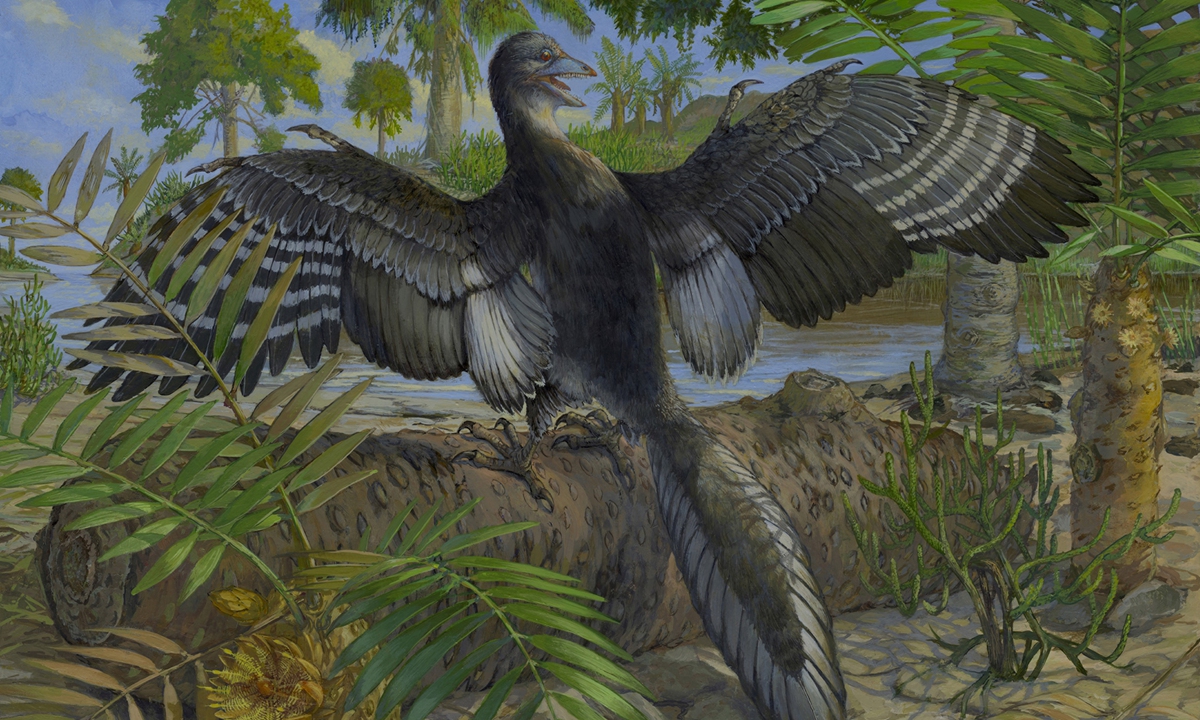
Life reconstruction of Jurassic bird Archaeopteryx. Photo: Michael Rothman
A joint Chinese-US research team has unveiled the "Chicago Archaeopteryx," an exquisitely preserved specimen of the iconic Archaeopteryx, providing fresh insights into the evolutionary transition from dinosaurs to modern birds, the team published its findings in the journal Nature in May 2025.
The research was led by Hu Han of the Institute of Vertebrate Paleontology and Paleoanthropology under the Chinese Academy of Sciences and Associate Curator Jingmai O'Connor of the Field Museum of Natural History in the US. The fossil, collected by the Field Museum in 2022, is the 14th and the smallest Archaeopteryx specimen known to date, about the size of a pigeon, and features a remarkably intact skeleton, soft tissue impressions, and feathers.
Using high-resolution CT scanning and 3D reconstruction, the researchers were able to reveal previously unknown details of the skull, soft tissues, and plumage. Notably, the skull includes a nearly complete palate—a structure rarely preserved in fossils of this age—indicating an intermediate morphology between troodontids1 and crownward Cretaceous birds. The study suggests that Archaeopteryx occupied a pivotal position in cranial evolution, marking the shift towards a less rigid cranial architecture in archaeopterygids from non-avian theropods.
Soft tissue traces, including well-preserved skin, toe pads, and feathers, were also discovered. The toe pad morphology resembles that of modern ground-dwelling birds, suggesting that Archaeopteryx may have had greater terrestrial mobility than previously assumed.
Significantly, the specimen is the first Archaeopteryx fossil found to possess tertial—those attached to the humerus and ulna, located between the wings and the body. These feathers likely evolved for flight, creating a continuous aerodynamic surface, an adaptation that has not been observed in non-avian dinosaurs closely related to birds. Researchers interpret this feature as a possible innovation linked to powered flight, and said these new findings clarify the mosaic of traits present in Archaeopteryx, refine ecological predictions and elucidate the unique evolutionary history of the Archaeopterygidae.
Peer reviewers from Nature described the fossil as "the most complete and best-preserved Archaeopteryx specimen to date, especially in terms of the skull," underscoring its exceptional research value. The discovery not only enriches understanding of the morphology and ecology of early avian species but also highlights the growing capabilities of modern paleontological techniques—especially in 3D reconstruction, soft tissue identification, and ecological function inference.
Archaeopteryx is one of the most famous fossil species in the world. Its discovery came shortly after the publication of Darwin's On the Origin of Species, providing powerful support for the then highly controversial theory of evolution.